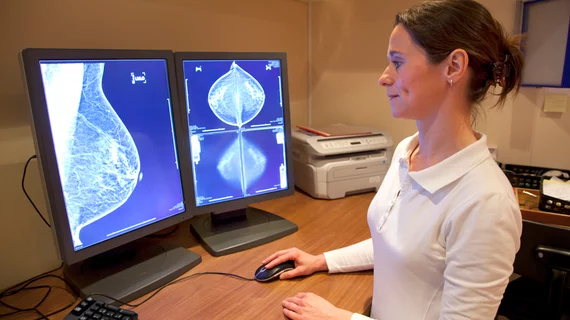Breast radiologists’ opinions diverge on how to structure resident education, rotations
Breast radiologists hold varying opinions regarding how to structure breast imaging rotations and education for residents, new survey results show.
For example, a slight majority of specialists said residents should spend at least equal or greater time reading diagnostic studies and performing procedures compared to tackling screening exams during their first rotation. At the same time, more than 80% agreed on that same breakdown for second and third rotations, authors reported Monday.
The responses gathered from more than 100 Society of Breast Imaging members can serve as a good starting point for those looking for clarity in their trainee education programs, Nicole Winkler, MD, and co-authors with the University of Utah Huntsman Cancer Institute’s radiology department wrote.
“Though the most recently published breast education curriculum provides comprehensive detailed topics to guide residency and fellowship programs, there has been little guidance on how to organize breast radiology rotations to maximize learning,” the authors added Aug. 30 in Current Problems in Diagnostic Radiology. “This information may be helpful for newer faculty seeking to shape the 12 weeks of required rotations at their programs as well as offer insight for experienced faculty looking to make updates/changes,” they noted later.
Breast imaging training incorporates three main topics: 1) screening, which involves many normal studies but little patient interaction; 2) diagnostic imaging, including a high volume of abnormal exams and extensive patient communication; and 3) procedures, involving technical skills and bedside manner. The challenge is juggling each so residents gain enough experience to practice independently.
With this in mind, Winkler et al. sent a 33-question survey to more than 2,000 SBI practicing radiologists. Overall, they gathered 109 responses in June 2019. Most worked in academic practices (62%), followed by private practice with residents and without (15% and 22%, respectively).
The authors were “surprised” at the lack of consensus on how to best structure first rotations. For instance, 37% said residents should mostly focus on screening with some diagnostics, while 21% said the opposite.
At the same time, 30% said residents should start interpreting breast MRI during their first rotation, while 50% said this shouldn’t be introduced until the second, along with biopsy procedures.
Breast rads did unanimously support checklists for tracking competency (77%), simulation for ultrasound-guided procedures (91%), and formal training on delivering bad news (90%). Many said their practice did not currently offer such education, however.
The authors noted their findings are merely viewpoints and more investigation is needed on these topics.
“It is important to consider that opinions and consensus recommendations do necessarily equate to educational outcome or competency,” the authors concluded. “Further research is needed into how educational design and exposure to case types during rotations impacts overall competency.”

